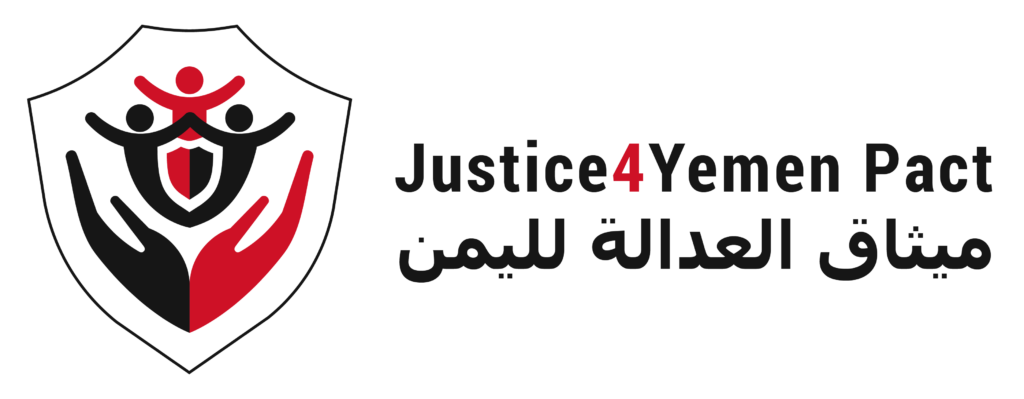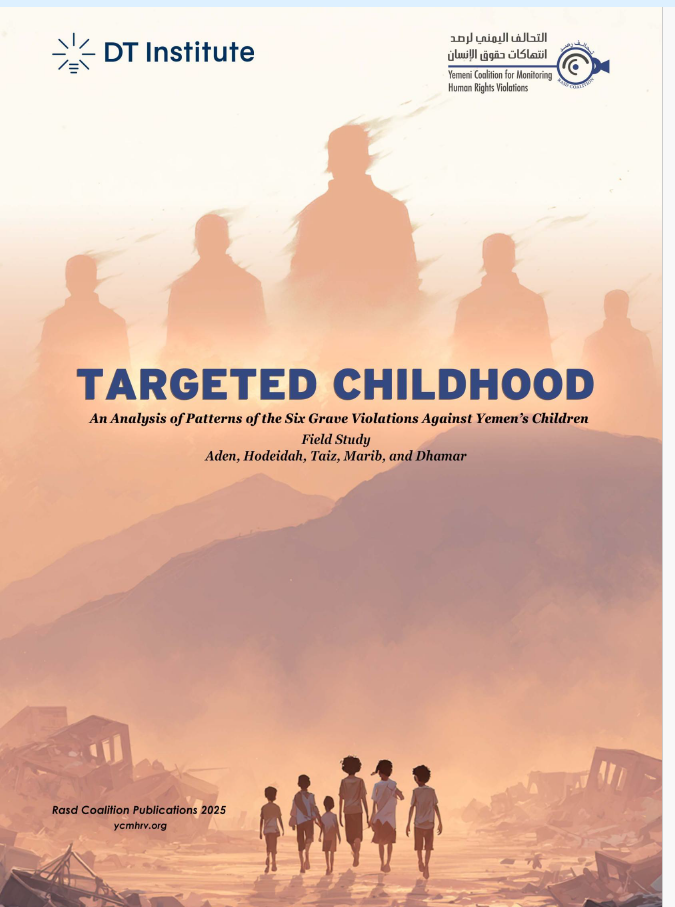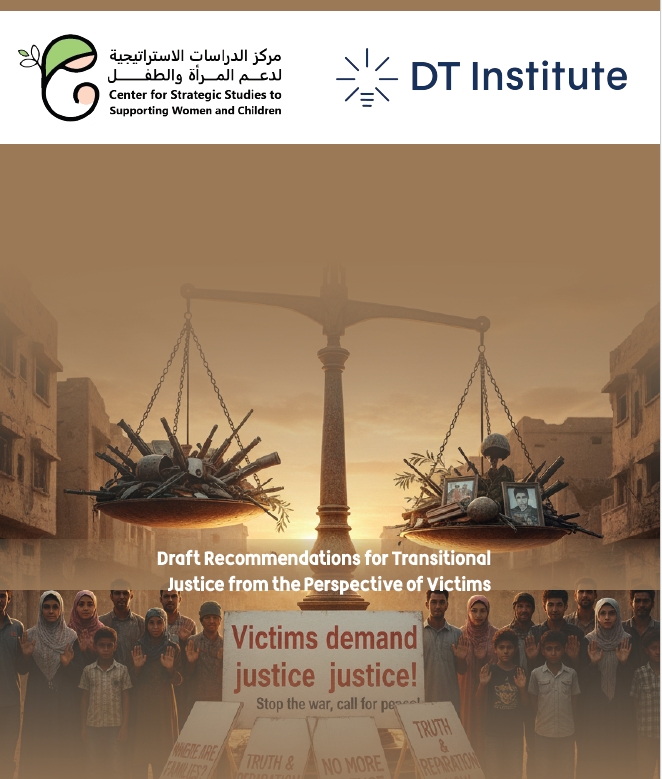| Incident: | Killing of Child Bayan Hussein Al-Barmani Al-Humayqani |
| Date: | May 9, 2025 |
| Location: | Barman area, Al-Zahir District, Al-Bayda Governorate — under the control of Houthi forces |
| Type of Violation: | Grave Violation Against Children – Killing and Maiming (Gunfire) |
| Map link: | 13°55’52″N 45°23’25″E |
Introduction
The joy felt by the little girl, Bayan Hussein Al-Barmani Al-Humayqani, as she and her sister got into her father’s car minutes after his return from Friday prayers on May 9, 2025, was meant to be the beginning of happy hours that would constitute to become a memorable moment she had been anticipating for days.
Unfortunately, it was the end of the entire family’s joy. The two girls and their father were heading to Al-Habaj area in Al-Zaher District, Al-Bayda Governorate, to visit relatives. When they left the house, joy was their companion. The car had not yet left their village, Aina, when disaster struck.
While they are crossing an armed Houthi militia checkpoint, and for no reason, Houthi gunmen fired several bullets directly at the car and the passengers. The bullets penetrated the car and struck the two girls. The 9-year-old Bayan was shot at her heart, land died instantly. Her 13-year-old sister was seriously injured and taken to the hospital for treatment.
The village was deeply shocked by this heinous and unjustified crime. Many expressed solidarity with the family. The crime was widely covered in social media as the images circulated. Over the following days, condemnations of the Houthi group continued, although they did not comment on the incident. However, some social media accounts, likely affiliated with the Houthi group, attempted to downplay the crime, claim it had not occurred, and accuse those who responded of treason, in a seemingly deliberate attempt to mislead, likely orchestrated by the Houthi group’s security services.


Disinformation at the expense of children’s blood:
The Rasd Coalition researchers use open sources to gather as much information as possible about the incident. While analyzing the data, Google Earth detected military checkpoints and Houthi militant posts on the main road in Barman district and the road linking it to Yafa’a District in Lahj Governorate, which is controlled by the Southern Transitional Council forces. This evidence was important in refuting the narrative that denied the Houthi armed presence in the area. It revealed that there were military checkpoints and small camps for Houthi militants. Other information from open sources also confirmed the presence of the checkpoints that abuse passengers.
Following a thorough investigation, Rasd Coalition researcher concluded that the shooting came from a military post overlooking the main road linking the Al-Habj and Aal Barman areas in Al-Zaher District, not from the checkpoint. This confirms that Hussein Al-Barmani did not commit a violation while crossing the checkpoint, nor did he fail to stop for inspection, according to another narrative that attempted to blame the victim and acquit the perpetrator.
Various media outlets and social media accounts circulated a photo of a car, which turned out to have been misused and linked to a shooting incident that occurred on September 2, 2024, when the car of Ali Hassan Jabarin, deputy head of the Tal’at Ara Local Council, was targeted while parked in the courtyard of the council building in the town of Salem, one of the towns in the Wadi Ara region of “Israel.”
Houthi activist accounts exploited the misuse of the photo to spread disinformation about the killing of the child, Bayan, and the injury of her sister. A person named Abu Imad Al-Suwadi posted a tweet on his account on the X platform, claiming that the entire story was a lie and a rumor.
Rasd Coalition researchers concluded that the incident was real, and all the evidence we obtained from open sources confirms the veracity of the murder of Bayan. Through reverse image search, we found a photo of the car of citizen Hussein Al-Barmani Al-Humaiqani, in which his daughter, Bayan was killed. An account named Ali Al-Barmani posted a photo of the involved car in one of the tweets. After tracing the photo, we determined that the car was a Toyota Fortuner SUV.
This crime reveals the disinformation practiced by the Houthi militia through its media outlets and online trolls, in an attempt to cast doubt on the crime and evade responsibility. Despite corroborated field evidence and credible open-source reports confirming that the child was fatally shot by Houthi gunmen at a checkpoint in Al Zaher District, a deliberate and coordinated campaign emerged across social media platforms aiming to distort the narrative, denying the incident and branding those who reported it as liars and traitors.
The Houthis exploited a misrepresented image, originally linked to a separate incident in Israel, as supposed evidence that reports concerning the child Bayan were fabricated. Remarkably, affiliated accounts consistently engage with any post highlighting violations against children, inundating them with denials, justifications, or doubt-casting remarks. This behavior appears not incidental but reflective of a deliberate media strategy designed to blur the truth, propagate alternative narratives, and shield the Houthi group from both domestic backlash and international condemnation, even at the grave cost of children’s lives.
The Houthi Disinformation Mechanism:
Following their takeover of Yemen’s capital, Sana’a, in September 2014, the Houthi group swiftly moved to seize public media institutions and suppress dissenting voices. Independent newspapers, satellite channels, and electronic news platforms were systematically shut down, except for those that aligned with the group’s narrative.
In parallel, the Houthis began investing in various media ventures and artistic productions, many of which propagate distorted portrayals of their opponents. This calculated strategy aims to control public opinion within their areas of influence and legitimize acts of violence.
As noted by the Yemeni Policy Center, substantial evidence indicates that the group is deeply engaged in shaping media discourse in territories under its rule, pursuing what they describe as a ‘soft war’ to secure dominance in public messaging and narrative control.
Conclusion:
The killing of 9-year-old Bayan and the wounding of her sister is not an isolated act of violence; it is emblematic of a broader, systematic strategy employed by the Houthi group. This dual assault operates on two fronts: the physical elimination of innocent lives and the digital obfuscation of facts to obliterate facts.
Verified field evidence, including satellite imagery of Google Earth, photographs of the Fortuner vehicle, and eyewitness testimonies from residents, unequivocally indicates that Bayan was fatally shot by Houthi militants at a checkpoint in Al-Zaher District. Pro-Houthi digital accounts launched an aggressive disinformation campaign, seeking to discredit the incident by circulating an unrelated image from a separate event in Israel. This deliberate falsification was used to challenge the authenticity of the reports and mislead public perception.
The pattern is disturbingly consistent and can be distilled into three strategic pillars: justification, denial, and distortion. Together, they form a calculated media doctrine designed to suppress truth, shield perpetrators from legal and moral scrutiny, and manipulate domestic and international opinion. Such manipulation is not accidental; it is central to what the Houthis themselves describe as a “soft war.”
As the suffering of families is reduced to hollow online debates, the persistent silence of the international community risks becoming a silent accomplice to impunity. Today, Yemeni civil society issues a resounding cry: Enough! The truth cannot be extinguished by a bullet, nor erased by a false tweet.





